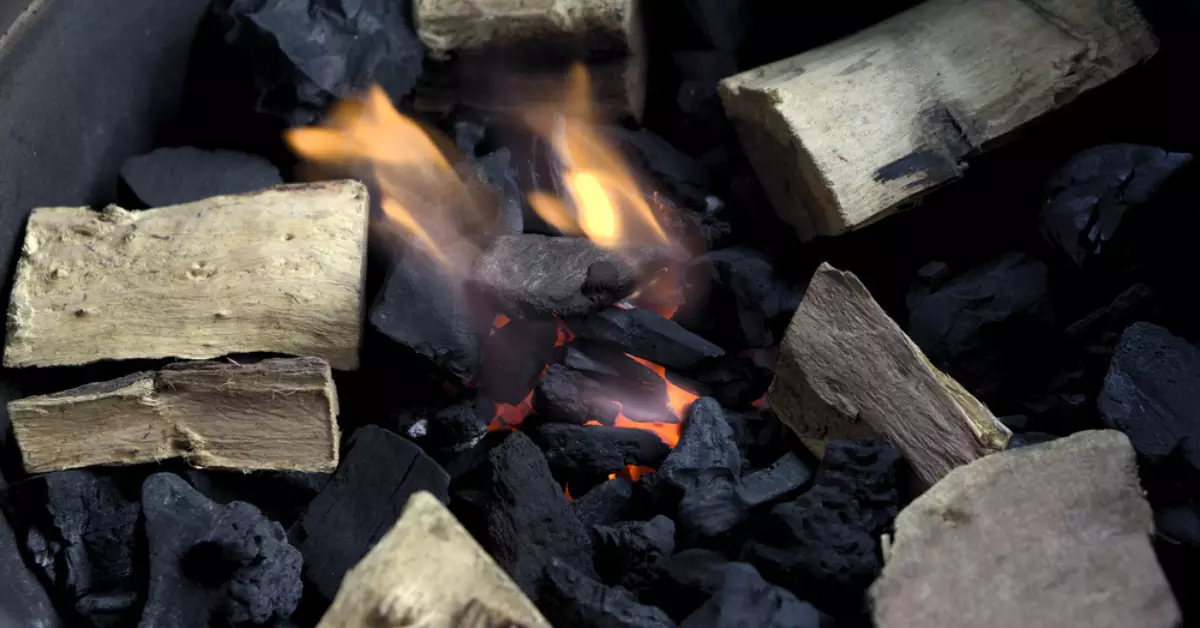Smoking has long been a favored method to cook and preserve food, lending it an unmatched depth of flavor. Wood plays a pivotal role in this culinary technique, acting as both the heat source and flavor infuser. Its influence extends from temperature regulation to the taste profile of the smoked product, with different wood types offering varying flavors and aroma.
The short answer to the question at hand is – Yes, it’s indeed possible to put too much wood in a smoker. Overloading your smoker with wood can lead to problems such as overly smoky flavor, damage to your smoker, and improper cooking. There’s a delicate balance that needs to be maintained for optimal smoking results.
In the world of smoking, understanding the science behind wood and smoke is essential. This understanding aids in achieving the desired flavors, and most importantly, it enables us to avoid the pitfalls of overloading wood in a smoker.
The Science Behind Wood and Smoke
Wood Types and Their Impact on Smoke
Wood used for smoking is not a one-size-fits-all commodity. Different types of wood yield different flavors, which can greatly influence the taste of your smoked foods. For instance, hickory and oak provide a strong flavor, suitable for red meats, while fruit woods like apple and cherry give a milder, sweeter smoke ideal for poultry or fish.
How Smoke Infuses Flavor
When wood burns in a smoker, it produces smoke. This smoke, packed with flavor compounds, surrounds the food and penetrates it, thus infusing the food with its distinctive smoky flavor. The level of flavor infusion depends on the smoke density, cooking time, and the type of wood used.
Risks of Overloading Wood in a Smoker
Flavor Overload and Its Consequences
Too much smoke can lead to an overly strong, unpleasant flavor. The balance between the smoky flavor and the natural taste of food is critical. Overloading wood can produce an excess of smoke, leading to a bitter, tar-like taste in the food.
Risks for Smoker Damage
Overloading a smoker with wood can also lead to physical damage. Excessive wood can cause higher than necessary temperatures, which may warp metal parts and harm the smoker’s functionality.
Optimal Wood Usage in Smokers
Selecting the Right Amount of Wood
Choosing the right amount of wood is not an exact science but requires experience and understanding of your smoker. As a general rule, a handful of wood chunks or a couple of cups of wood chips are often sufficient for a typical smoking session.
Signs You’re Using the Right Amount
If you’re using the right amount of wood, the smoker will maintain a steady temperature, and there should be thin blue smoke coming from the exhaust. Thick white smoke, on the other hand, indicates that the wood is not burning efficiently and might signify overloading.
Common Mistakes When Loading Wood in a Smoker
Overloading Wood: Implications and Outcomes
The desire for a stronger smoky flavor might tempt you to add more wood. However, this can lead to a stronger than desired flavor and potential damage to your smoker. It can also cause incomplete combustion, leading to the production of creosote, a bitter-tasting compound.
Not Allowing Adequate Airflow
For wood to burn efficiently, it requires ample oxygen. Overloading wood can restrict airflow in the smoker, leading to inefficient burning and poor temperature control.
Tips for Proper Wood Loading in Smokers
Importance of Wood Size and Preparation
The size of the wood plays a critical role in how it burns. Smaller pieces like chips or pellets burn faster and produce smoke quicker than larger chunks. Also, using well-seasoned wood is key. It burns cleaner and produces better smoke for flavoring.
Interval Loading for Sustained Smoking
For longer smoking sessions, it is better to add wood at intervals rather than all at once. This strategy allows for a consistent smoke level and temperature, enhancing the overall smoking process and the final product’s flavor.
Frequently Asked Questions
Can you use too little wood in a smoker?
Yes, using too little wood can result in insufficient smoke, leading to underwhelming flavor. It’s about striking the right balance – not too much, not too little.
Can the type of wood affect my food’s flavor?
Absolutely! Different woods impart different flavors. For example, mesquite has a robust flavor suitable for red meats, while applewood offers a milder, fruity flavor perfect for poultry and pork.
Do wood chips and wood chunks produce the same amount of smoke?
No, they don’t. Wood chips burn faster and produce smoke more quickly, but for a shorter duration. Wood chunks burn slower, providing a steady stream of smoke over a longer period.
Conclusion
Overloading a smoker with wood is a common pitfall that can turn a delightful smoky flavor into a bitter disappointment. Understanding the underlying science helps to avoid this issue and optimize the smoking process.
Moreover, selecting the right amount and type of wood and adhering to best practices for loading wood in a smoker ensures a successful smoking experience. Remember, patience is the key to smoking; allow the wood to infuse the food over time for the best flavors.
As smoking enthusiasts, let’s strive to achieve that perfect balance, for the right amount of wood can make all the difference between an average and an unforgettable smoked dish. After all, the art of smoking is a journey of flavor exploration. The understanding and mastery of wood usage is a significant step in that journey.







